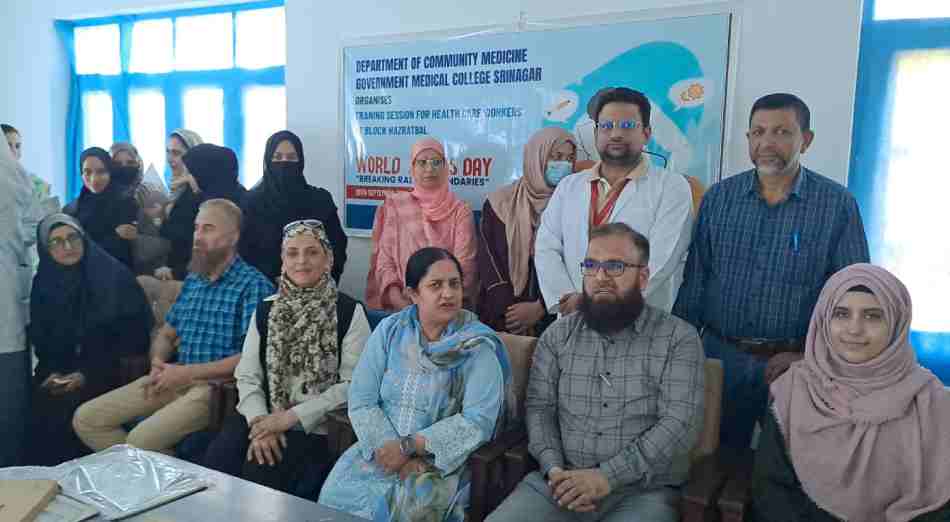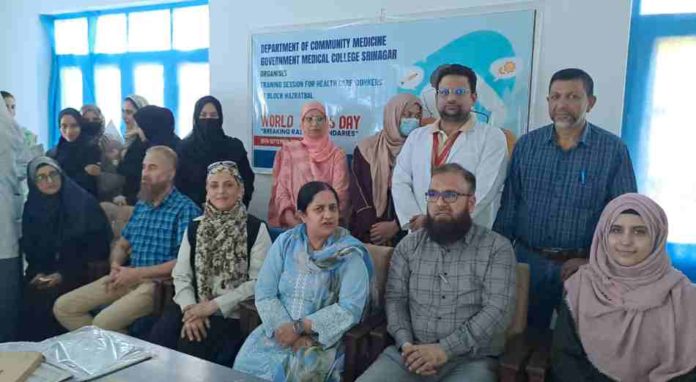SRINAGAR: As the world marks World Rabies Day, a surge in animal bites—particularly from cats and dogs—has raised concerns about rabies transmission in Srinagar. The Anti-Rabies Clinic (ARC) at SMHS Hospital reported 5,964 cases from April 1, to September 27, 2024, with 3,015 dog bites and an alarming 2,679 exposures from cats. Only 270 attacks were reported in the clinic involving other animals.

This year’s theme, Breaking Rabies Boundaries, emphasises the need to intensify rabies prevention efforts globally, with India bearing a significant portion of the burden.
While dog bites, especially from strays, remain a pressing issue, the rising number of cat-related exposures has startled medical professionals. Over recent years, as more people have taken to keeping cats as pets, the number of cases involving cat bites and scratches has increased dramatically. ARC SMHS Hospital now reports nearly as many cat exposures as dog bites.
The rise in cat exposures has been notable in recent years, particularly as more people adopt cats as pets. This year’s data shows that cases involving cat bites and scratches are nearing those involving stray dog bites. Cats, although perceived as less dangerous, can also transmit rabies, especially if not vaccinated or exposed to rabid animals. While stray dogs remain the primary cause of outdoor attacks, with most dog bite cases stemming from stray animals, the increasing number of indoor cat exposures highlights a growing threat inside homes.
“Cat bites and scratches are becoming a real threat,” said an official from the clinic. “Many people assume that rabies is only a concern with dogs, but rabies can be transmitted by any mammal, including cats, and the rise in cat exposures puts a larger portion of the population at risk.”
The clinic has been treating an average of 1,000 animal bite or scratch cases per month, a figure expected to exceed last year’s total of 8,000 cases. With cats contributing to nearly half of this year’s cases, the issue is receiving renewed attention.
World Rabies Day, held every year on September 28, to commemorate the death of Louis Pasteur, the discoverer of the anti-rabies vaccine, serves as a global reminder of the dangers of rabies, a disease that claims over 55,000 lives annually. This year’s theme, Breaking Rabies Boundaries, calls for innovative approaches to eliminate human rabies, which is predominantly transmitted by dogs, but also underscores the need for vigilance with other animals, such as cats.
The world commemorates World Rabies Day marks the anniversary of Louis Pasteur’s death—the scientist who discovered the anti-rabies vaccine.
The Department of Community Medicine at Government Medical College (GMC) Srinagar marked the day with various awareness and training initiatives. A key event was held at the Urban Primary Health Centre (UPHC) in Nishat, with Prof Iffat Hassan, Principal and Dean of GMC Srinagar, presiding over the programme. Dr S Muhammad Salim Khan, Professor and Head of the Community Medicine Department, also attended, along with several other distinguished medical professionals.
The programme included CME (Continuing Medical Education) sessions, training for healthcare workers, and poster competitions aimed at raising awareness about rabies prevention. The technical presentations, delivered by Assistant Professors Dr Kouser Sideeq and Dr Sameena Yousuf Dar, focused on managing animal exposures, while practical demonstrations provided by Insha Rehman, a pharmacist from the Anti-Rabies Clinic, gave attendees a hands-on understanding of rabies treatment procedures.
Prof Iffat Hassan underscored the importance of public awareness in combatting rabies, urging both pet owners and the general public to take any animal bite seriously. “Rabies is almost always fatal if left untreated, and with the rise in cat exposures, it is critical for pet owners to ensure their animals are vaccinated. Immediate treatment following a bite is essential,” she stressed.
Certificates of appreciation were awarded to healthcare workers, while winners of the poster competition were presented with certificates of merit. The event fostered community engagement, with the overarching goal of eliminating rabies by 2030 through the holistic One Health approach, which integrates human, animal, and environmental health.
Healthcare officials are particularly concerned about the delay in seeking treatment for cat bites, as many people are unaware of the rabies risk. While dogs remain the primary source of rabies transmission, the increasing number of indoor pet-related incidents has highlighted the need for broader public awareness campaigns.
“Cat bites might not seem as dangerous as dog bites, but they can be just as severe,” noted Dr S Muhammad Salim Khan. “Rabies is preventable with immediate action, but the public needs to be aware of the risks associated with all animal bites.”
As World Rabies Day raises awareness globally, Srinagar’s surge in animal bite cases serves as a stark reminder that rabies remains a serious public health threat. While strides have been made in combating dog-transmitted rabies, the rising number of cat exposures calls for heightened vigilance and preventative measures. Public health campaigns, such as those spearheaded by GMC Srinagar, are critical in educating the public and healthcare professionals alike, pushing towards the ultimate goal of global rabies elimination by 2030.


